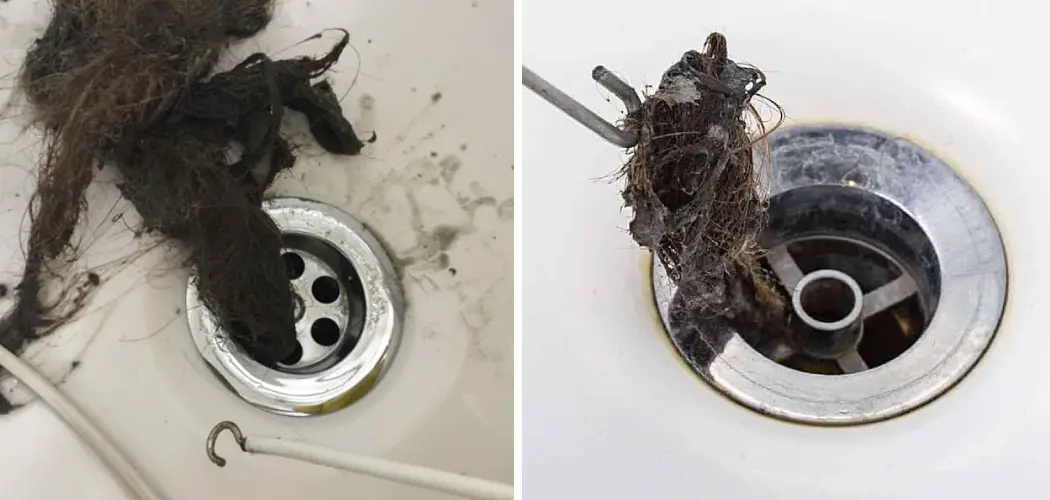We’ve all been there: you’re in your shower and the water isn’t draining, pooling around your feet instead. You assume it’s because of those errant pieces of hair – we’ve all seen them in our brushes and got angry at them for a reason!
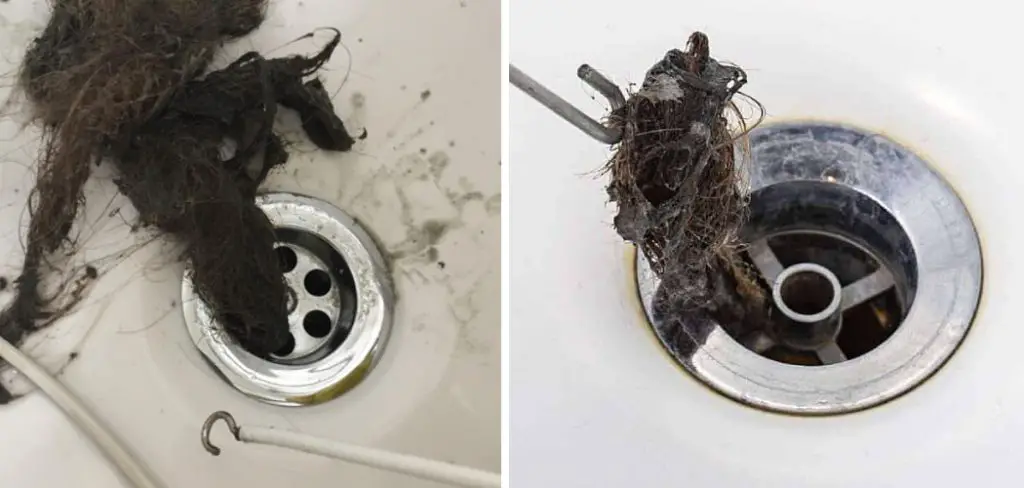
Dealing with clogged drains is an unwelcome task that no one wants to take on but can become necessary if you don’t want to deal with standing water every time you turn on the showerhead. In this post, we’ll discuss how to clear a drain of hair so that showers become low maintenance again!
Step-by-step Guidelines on How to Clear a Drain of Hair
Step 1: Understand the Problem
Before you start the process of clearing a drain of hair, it’s important to first understand the cause and scope of the problem. Hair can be a major culprit of clogged drains, but other things like food scraps, soap scum, and foreign objects can also contribute to the obstruction. If you can identify the source of the problem, it’ll be easier to tackle. But, even if you’re unable to pinpoint the cause, don’t worry – there are still solutions.
Step 2: Gather Supplies
To successfully clear a drain of hair and other debris, you’ll need to gather the proper supplies for the job. These include items like a plunger, an auger or snake, rubber gloves, safety glasses, and protective clothing if necessary. You’ll also need a bucket for collecting any debris. Remember, safety is of the utmost importance and you should always wear proper gear and be careful when clearing clogged drains. So, make sure to always have a plan before you start tackling any clogs.
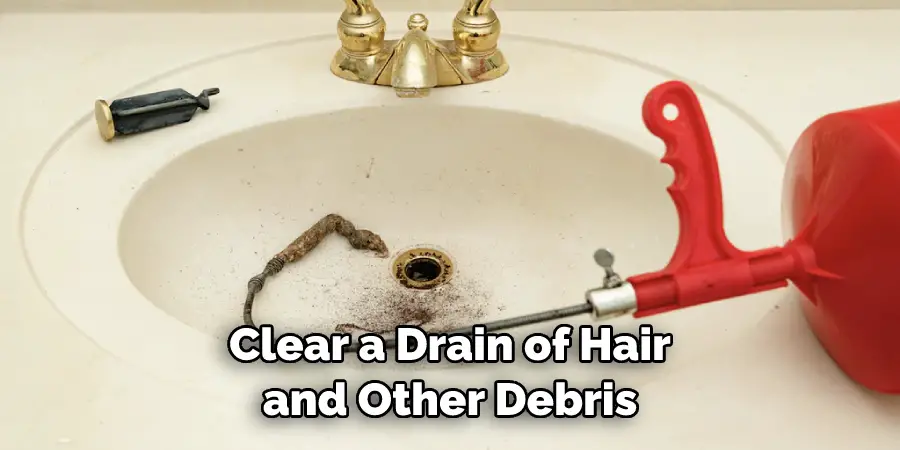
Step 3: Put on Protective Gear
Safety first! Make sure you wear the necessary protective gear for the job, especially if you’re dealing with a backed-up sewer, which can contain dangerous bacteria. So don rubber gloves, safety glasses, and a face mask if necessary. But don’t forget to take off the protective gear and wash your hands afterward.
Step 4: Remove the Drain Cover
Remove any drain cover to reveal the clog and also to access it easier. If you have difficulty removing a stuck cover, use a pliers or another tool that is appropriate for your specific case. You may also need to use an old toothbrush or other stiff bristle brush to scrub away any built-up residue. It’s important to note that if you can easily access the clog and it appears to be a large mass of hair, then you should skip to Step 7.
Step 5: Apply Plunger
Apply a plunger over the drain and create a seal by pushing down on it. Then plunge several times up and down to try and dislodge the clog. The force of the plunger should push out the clog and clear away any debris. It may take a few tries before you’re successful. You know the clog has been dislodged if you feel a gush of water coming through.
Step 6: Try an Auger
If plunging doesn’t do the trick, try using an auger or “snake.” Insert the snake into the drain and use it to push through any clogs in the drainpipe. You may need to twist the auger slightly to help break up any blockages. This step can be a bit tricky and time consuming, but it may clear the drain of hair. So, have patience!
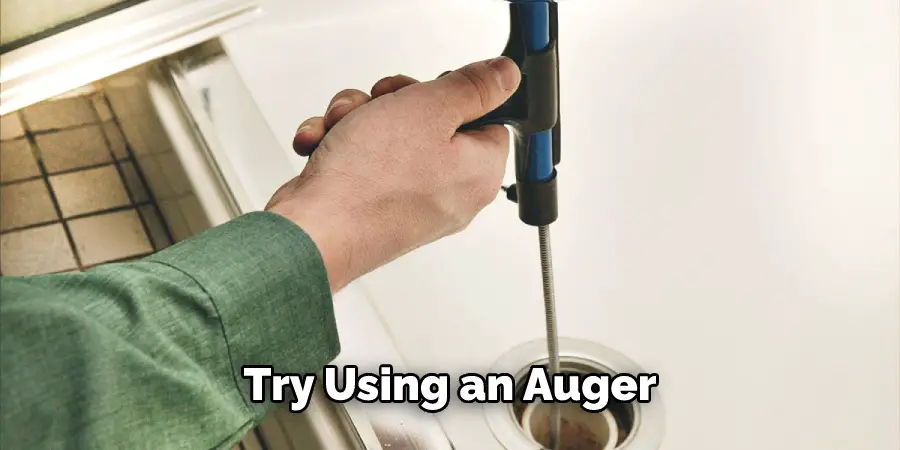
Step 7: Use Chemical Cleaners
Chemical cleaners can also be used to help clear a drain of hair. Make sure to wear protective clothing and follow all safety instructions before attempting this step! You should also keep in mind that chemical cleaners can damage certain types of plumbing, so be sure to research the cleaner you’re using before applying it. This step can be used in combination with other steps or as a last resort.
Step 8: Try Boiling Water
You can also try boiling water as a last resort. Pour boiling hot water slowly down the drain several times – this is usually effective for clearing out stubborn clogs. That said, this step should only be used as a last resort, as it can damage pipes if done improperly. You may also want to try using a solution of baking soda and vinegar.
Step 9: Check for Blockages
Once you’ve finished all these steps, check the pipes for any blockages. If there are still clogs present, you may need to call a professional plumber for assistance. You don’t want to risk damaging any of your pipes! That can get expensive. So it’s better to be safe than sorry. You may also need to use a snake or auger once again.
Step 10: Clean the Drain
Make sure to clean the drain and pipes thoroughly with soap and warm water after clearing the clog. This will help keep future blockages from forming. This is especially important for sinks and bathtubs, as soap scum can quickly cause new clogs. You can also use a vinegar-water solution to help clean and clear the drain of any residual gunk.
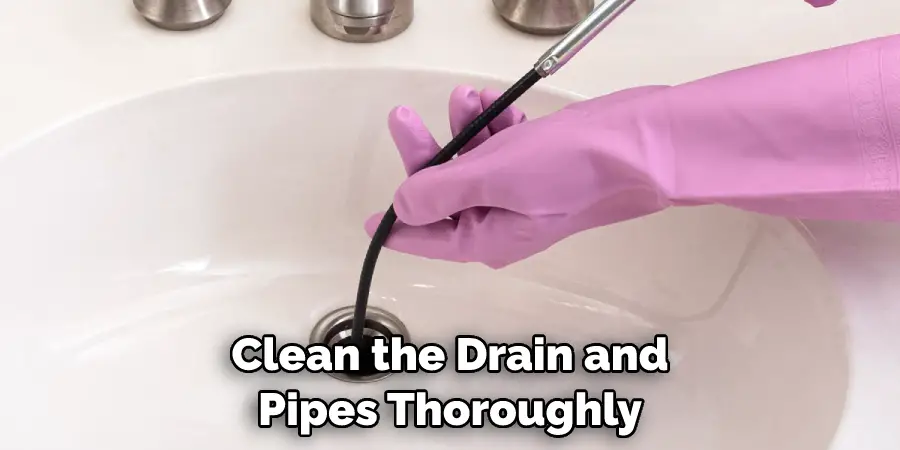
Step 11: Replace the Drain Cover
Once you’re done, make sure to replace the drain cover – this helps prevent hair and other debris from getting into your pipes in the first place! If you don’t have a drain cover, make sure to purchase one and install it correctly. But, for certain types of drains (like laundry and kitchen sinks), it’s better to use a strainer instead.
Step 12: Prevention is Key!
Finally, do what you can to prevent future clogs by being mindful of what goes down your shower drains. Don’t let food scraps, oils, and hair build up in the pipes – this will help keep your drain clear for longer. After all, an ounce of prevention is worth a pound of cure! You’ll thank yourself later.
Following these 12 steps can help you how to clear a drain of hair with minimal hassle! While this process may seem daunting at first, with the right tools and some patience, it doesn’t have to be.
Any time this happens, you can follow these 12 easy steps to get your drain and pipes back in working order. Plus, you’ll save money on plumbing bills by taking care of the clog yourself! So don’t be intimidated – take a deep breath and get started. Good luck!
Do You Need Professional Support?
If your attempts to clear a drain of hair are unsuccessful, it may be time to call in the professionals. A licensed plumber can assess the situation and take the necessary steps to get pipes running smoothly again. Plumbers bring specialized tools and expertise that you may not have, so don’t hesitate to contact one if needed. It will cost you a bit, but it will be worth the peace of mind knowing that your drain is flowing freely again.
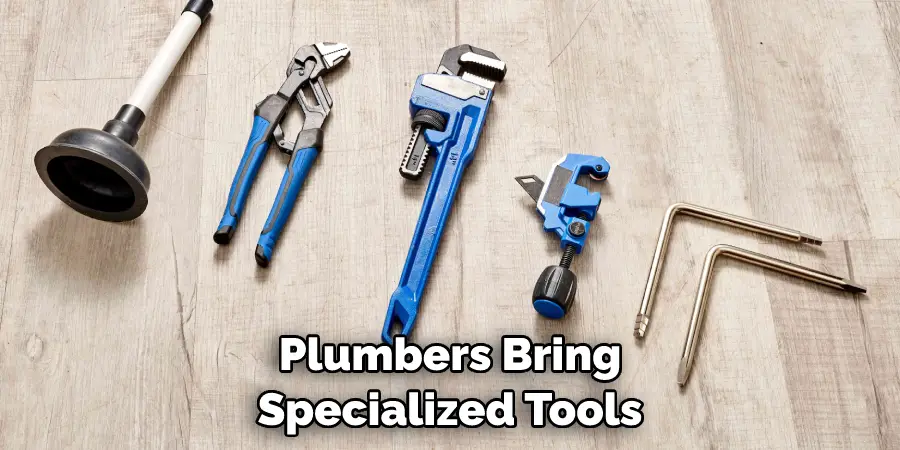
Frequently Asked Questions
Q: How Do I Know When the Clog is Cleared?
A: You’ll know the clog has been cleared when you no longer feel resistance when you plunge or snake the drain. Additionally, water should be able to flow freely down the drain once it is cleared.
Q: How Often Should I Clean My Pipes?
A: This largely depends on your plumbing and usage. If you’re dealing with regular clogs, you may need to clean your pipes more often. In general, it’s a good idea to clean drains at least once a month to prevent clogs from forming.
Q: What if I Can’t Clear the Clog?
A: If you can’t clear the clog, it’s best to call a professional plumber for assistance. They’ll have the right tools and expertise needed to help clear stubborn blockages. Additionally, attempting to fix the issue yourself can cause further damage to your pipes.
Q: Is There Anything Else I Can Do to Prevent Clogs?
A: Yes! Prevention is key when it comes to clogged drains. Make sure you’re being mindful of what goes down your sink, bathtub, and shower drains – This includes food scraps, oils, and hair. Additionally, make sure to use a strainer or drain cover to help prevent debris from entering the pipes in the first place.
This will help keep your drain and pipes clear of clogs for longer. Regularly cleaning your drains with a vinegar-water solution can also be helpful!
Conclusion
Clearing a blocked drain of hair can be messy and annoying, but taking the time to do it yourself will save you time, money, and a lot of frustration in the long run. If you feel like your drain is clogged, instead of calling a professional right away, try to perform one or more of these steps first.
Of course, if all else fails, then ensure that you using a reliable plumbing company who will keep safety in mind when they do the work.
In any case, being aware of what methods to try at home and how to clear a drain of hair properly is an invaluable skill for anyone who has ever experienced a backed-up sink or tub due to too much hair. Taking small steps such as checking for blockages yourself could end up saving you hundreds or even thousands of dollars in the future.

